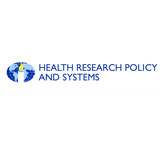
Background
Improved knowledge of obstetric danger signs, birth preparedness practices, and readiness for emergency complications are among the strategies aimed at both enhancing utilization of maternal health services and increasing access to skilled care during childbirth, particularly for women with obstetric complications. It is unclear whether knowledge of danger signs translates into improved birth preparedness and complication readiness. The objective was to assess the association between knowledge of danger signs and birth preparedness among women admitted with pregnancy complications.
Methods
The study included 810 women admitted in the antepartum period to Mulago hospital, Uganda. Data was collected on socio-demographic characteristics, reproductive history, pregnancy complications, knowledge of danger signs, and birth preparedness/complication readiness (BPCR). Logistic regression analyses were conducted to explore the relationship between knowledge of danger signs and birth preparedness.
Results
Only about 1 in 3 women were able to mention at least three of the five basic components of BPCR, and could be regarded as ‘knowledgeable on BPCR’. One in every 4 women could not mention any of the five components. Women with history of obstetric problems during the previous pregnancy were more likely to be knowledgeable on danger signs when compared to those who had no complications in prior pregnancy. Women who were knowledgeable on danger signs were four times more likely to be knowledgeable on BPCR as compared to those who were not knowledgeable.
Conclusions
Though awareness about danger signs was low, knowledge of danger signs was associated with knowledge of birth preparedness. More emphasis should be given to emergency/complication readiness during antenatal care sessions. There is a need to strengthen existing policy interventions to address birth preparedness and complication readiness for obstetric emergencies.